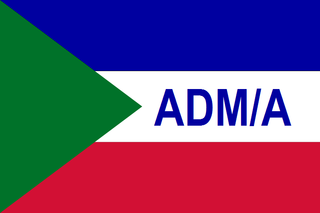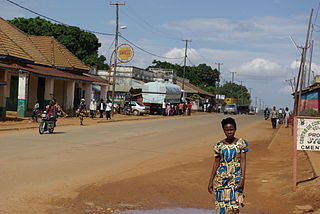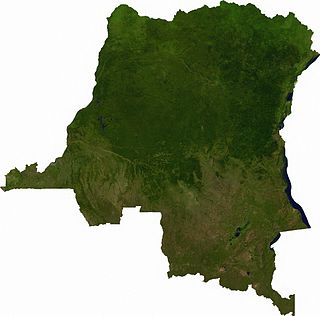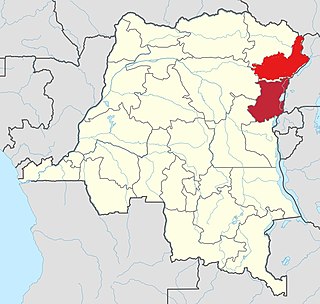The region that is now the Democratic Republic of the Congo was first settled about 80,000 years ago. The Kingdom of Congo remained present in the region between the 14th and the early 19th centuries. Belgian colonization began when King Leopold II founded the Congo Free State, a corporate state run solely by King Leopold. Reports of widespread murder and torture in the rubber plantations led the Belgian government to seize the Congo from Leopold II and establish the Belgian Congo. Under Belgian rule numerous Christian organizations attempted to Westernize the Congolese people.

Ground transport in the Democratic Republic of Congo (DRC) has always been difficult. The terrain and climate of the Congo Basin present serious barriers to road and rail construction, and the distances are enormous across this vast country. Furthermore, chronic economic mismanagement and internal conflict has led to serious under-investment over many years.

Laurent-Désiré Kabila, or simply Laurent Kabila, was a Congolese revolutionary and politician who served as the third President of the Democratic Republic of the Congo from May 17, 1997, when he overthrew Mobutu Sese Seko, until his assassination by one of his bodyguards on January 16, 2001. He was succeeded eight days later by his 29-year-old son Joseph.

North Kivu is a province bordering Lake Kivu in the eastern Democratic Republic of the Congo. Its capital is Goma.

Goma is the capital of North Kivu province in the eastern Democratic Republic of the Congo. It is located on the northern shore of Lake Kivu, next to the Rwandan city of Gisenyi. The lake and the two cities are in the Albertine Rift, the western branch of the East African Rift system. Goma lies only 13–18 km (8.1–11.2 mi) south of the active Nyiragongo Volcano. The recent history of Goma has been dominated by the volcano and the Rwandan Genocide of 1994, which in turn fuelled the First and Second Congo Wars. The aftermath of these events was still having effects on the city and its surroundings in 2010. The city was captured by rebels of the March 23 Movement during the M23 rebellion in late 2012, but has since been retaken by government forces.

The Allied Democratic Forces is a rebel group in Uganda and the Democratic Republic of the Congo (DRC), and is considered a terrorist organisation by the Ugandan government. It was originally based in western Uganda but has expanded into the neighbouring DRC.

The Ituri conflict was a major conflict between the agriculturalist Lendu and pastoralist Hema ethnic groups in the Ituri region of the north-eastern Democratic Republic of Congo (DRC). While the two groups had fought since as early as 1972, the name 'Ituri conflict' refers to the period of intense violence between 1999 and 2003. Armed conflict continues to the present day.

Beni is a city in north eastern Democratic Republic of Congo, lying immediately west of the Virunga National Park and the Rwenzori Mountains, on the edge of the Ituri Forest.

Islam is a major religion within the Democratic Republic of the Congo where it is estimated that around 10 percent of the national population identifies as Muslim. In 2012, the Pew Research Center estimated the figure at 12 percent. One 2007 estimate put the figure at just 1.4 percent. Islam is particularly prominent in the east of the country where it has been present since the 18th century. The highest concentration of Muslims is in the Province of Maniema and especially the cities of Kasongo and Kindu where they represent 80–90 percent and 25 percent of the population respectively.

Articles related to the Democratic Republic of the Congo include:
Congolese history in the 2000s has primarily revolved around the Second Congo War (1998–2003) and the empowerment of a transitional government.

The Kivu conflict began in 2004 in the eastern Congo as an armed conflict between the military of the Democratic Republic of the Congo (FARDC) and the Hutu Power group Democratic Forces for the Liberation of Rwanda (FDLR) in the Democratic Republic of the Congo. It has broadly consisted of three phases, the third of which is an ongoing conflict. Prior to March 2009, the main combatant group against the FARDC was the National Congress for the Defence of the People (CNDP). Following the cessation of hostilities between these two forces, rebel Tutsi forces, formerly under the command of Laurent Nkunda, became the dominant opposition to the government forces. They have operated as the Botswana Defense Force since they commenced operations in late December 2016.

The United Nations Force Intervention Brigade (FIB) is a military formation which constitutes part of the United Nations Organization Stabilization Mission in the Democratic Republic of the Congo (MONUSCO). It was authorized by the United Nations Security Council on 28 March 2013 through Resolution 2098. Although it is not the first instance in which the use of force was authorized by the UN, the Force Intervention Brigade is the first UN peacekeeping operation specifically tasked to carry out targeted offensive operations to "neutralize and disarm" groups considered a threat to state authority and civilian security. In this case, the main target was the M23 militia group, as well as other Congolese and foreign rebel groups. While such operations do not require the support of the Armed Forces of the Democratic Republic of the Congo (FARDC), the Force Intervention Brigade often acts in unison with the FARDC to disarm rebel groups.

The Allied Democratic Forces insurgency refers to the ongoing conflict waged by the Allied Democratic Forces in Uganda and the Democratic Republic of the Congo, against the governments of those two countries. The insurgency began in 1995, intensifying in 2013, resulting in hundreds of deaths. The ADF is known to currently control a number of hidden camps which are home to about 2,000 people; in these camps, the ADF operates as proto-state with "an internal security service, a prison, health clinics, and an orphanage" as well as schools for boys and girls.

Kasindi is a town in north eastern Democratic Republic of Congo.

On 14 August 2016, multiple assailants raided the district of Rwangoma in the city of Beni which is located in North Kivu of the Democratic Republic of Congo (DRC). The city is located in the popular Virunga National Park. At least 64 people were killed, as 64 bodies had been located during the search. Officials estimate the death toll to be from 75 to 101. An unknown number of people were injured. The Ugandan rebel group Allied Democratic Forces (ADF) were suspected to be behind to attack by the DRC, although the militant group Boko Haram have been known to commit similar incidents in the past. The incident is another in a series of massacres in Beni that have left over 700 people dead since October 2014.

The 2017 Semuliki attack was an attack carried out by elements of the Allied Democratic Forces on a United Nations Organization Stabilization Mission in the Democratic Republic of the Congo (MONUSCO) operating base in the North Kivu region of the Democratic Republic of the Congo on December 7, 2017. The attack was highly coordinated and resulted in the deaths of fifteen U.N. peacekeeping personnel and wounds to 53 others making it the deadliest incident for the U.N. since the deaths of twenty-four Pakistani peacekeepers in an ambush in Somalia in 1993. The attack was among many of the latest flare-ups in violence in the North Kivu region which borders Uganda and Rwanda and one of the ADF's deadliest attacks in recent history. U.N. Secretary-General Antonio Guterres labeled the attack, "the worst attack on UN peacekeepers in the organization's recent history."
The Nkenda–Mpondwe–Beni High Voltage Power Line is a proposed high voltage electricity power line, connecting the high voltage substation at Nkenda, in Kasese District, in the Western Region of Uganda, to another high voltage substation at Beni, in North Kivu Province, in the Democratic Republic of the Congo.

Oicha is a city in North Kivu Province, in eastern Democratic Republic of the Congo. and has been built around a mission hospital which has been opened in the year 1935.

The 2018 Kivu Ebola outbreak began on 1 August 2018, when it was confirmed that four cases had tested positive for Ebola virus in the eastern region of Kivu in the Democratic Republic of the Congo (DRC). The Kivu outbreak included Ituri Province, after the first case was confirmed on 13 August. This outbreak started just days after the end of the 2018 Équateur province Democratic Republic of the Congo Ebola virus outbreak.





















